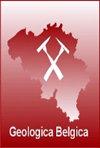Detailed characterization of the Late Pleistocene loess sequence stratigraphy of Remicourt (Hesbaye region, Belgium) with cone penetration tests
IF 0.7
4区 地球科学
Q2 GEOLOGY
引用次数: 3
Abstract
1. IntroductionLoess is an aeolian deposit characterized by a very well sorted grain size distribution predominantly ranging between 10-50 µm (corresponding to coarse silt from ASTM D2487-06). In its detailed definition of loess, Pecsi (1990, 1995) added that the weight percentage of the silt fraction corresponds to 40-70%. Geologists, geomorphologists and soil scientists usually consider this material as a sedimentary sequence with heterogeneities even at local scale (palaeosols, unconformity surfaces, palaeovalleys...). In addition to preliminary survey works, characterization of loess and resulting interpretations are classically performed by sedimentological (e.g. Antoine et al., 2013; Guo et al., 2013), pedological (e.g. Ding et al., 1999; Schellenberger & Veit, 2006), mineralogical (e.g. Smykatz-Kloss et al., 2004; Pouclet et al., 2008; Pouclet & Juvigne, 2009) and chronostratigraphic (e.g. Buylaert et al., 2008; Roberts, 2008) studies. Results of these studies point out a succession of layers and horizons including removed sediments, eventual tephra (e.g. Pouclet et al., 2008; Pouclet & Juvigne, 2009) and post-depositional processes as palaeosols formation (e.g. Antoine et al., 2013; Guo et al., 2013; Schellenberger & Veit, 2006), redox processes, chemical and mineralogical modifications (e.g. Schellenberger & Veit, 2006). Moreover, loess deposits are very easily erodible, raising the complexity for stratigraphic studies due to the presence of locally eroded layers and比利时Hesbaye地区Remicourt晚更新世黄土层序地层学详细表征
1. 黄土是一种风成沉积,其特点是粒度分布非常好,主要分布在10-50 μ m之间(对应于ASTM D2487-06中的粗粉土)。Pecsi(1990,1995)在对黄土的详细定义中补充说,粉土组分的重量百分比对应于40-70%。地质学家、地貌学家和土壤科学家通常认为这种材料是具有非均质性的沉积序列,即使在局部尺度上也是如此(古土壤、不整合面、古山谷……)。除了初步的调查工作,黄土的表征和由此产生的解释通常由沉积学(例如Antoine et al., 2013;Guo et al., 2013),土壤学(例如Ding et al., 1999;Schellenberger & Veit, 2006),矿物学(例如Smykatz-Kloss等人,2004;poulet等人,2008;poulet & Juvigne, 2009)和年代地层(例如Buylaert et al., 2008;罗伯茨,2008)研究。这些研究的结果指出了一系列的层和层,包括被移走的沉积物,最终的地层(例如,Pouclet等人,2008;poulet & Juvigne, 2009)和沉积后过程作为古土壤形成(例如Antoine et al., 2013;郭等,2013;Schellenberger & Veit, 2006),氧化还原过程,化学和矿物学修饰(例如Schellenberger & Veit, 2006)。此外,黄土沉积物很容易被侵蚀,由于局部侵蚀层的存在,增加了地层学研究的复杂性
本文章由计算机程序翻译,如有差异,请以英文原文为准。
求助全文
约1分钟内获得全文
求助全文
来源期刊

Geologica Belgica
地学-地质学
CiteScore
4.70
自引率
27.80%
发文量
8
审稿时长
>12 weeks
期刊介绍:
Geologica Belgica is a Belgian journal that welcomes papers concerning all aspects of the earth sciences, with a particular emphasis on the regional geology of Belgium, North West Europe and central Africa. Papers not dedicated to the geology of Belgium, North West Europe and central Africa are only accepted when one of the authors is linked to a Belgian University or Institution. Thematic issues are highly appreciated. In this case, guest editors take in charge the selection of the manuscripts and the subject of the papers can be enlarged. The journal is in open access.
Submitted manuscripts should be concise, presenting material not previously published. The journal also encourages the publication of papers from Belgian junior authors. Short letters are accepted. Papers written in English are preferred. Each mansucript will be reviewed by at least two reviewers.
 求助内容:
求助内容: 应助结果提醒方式:
应助结果提醒方式:


